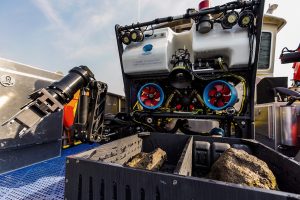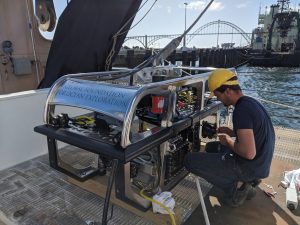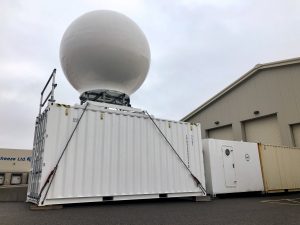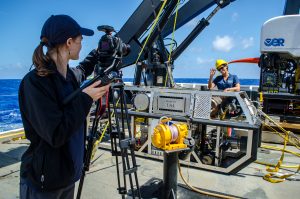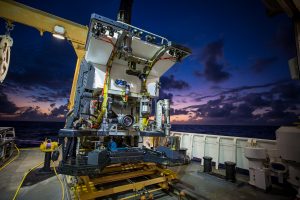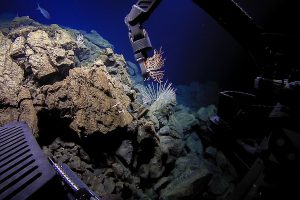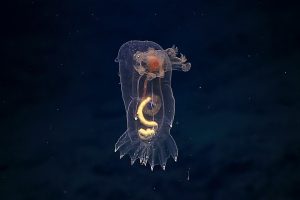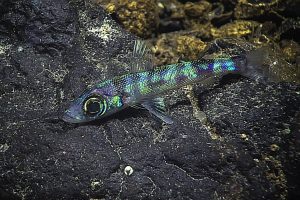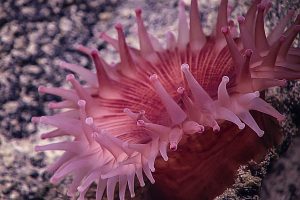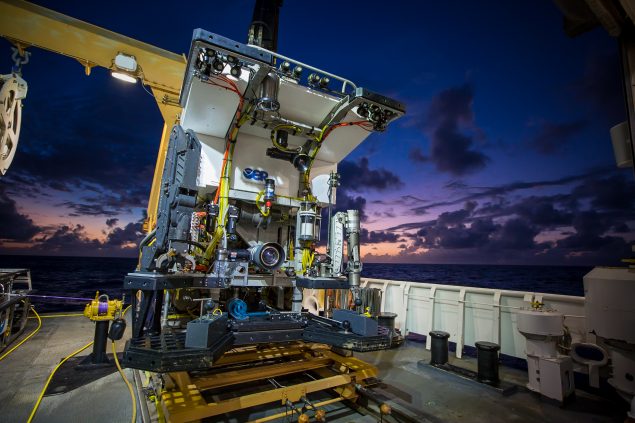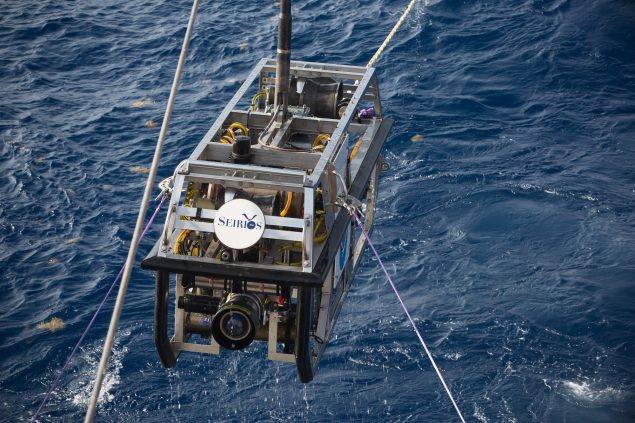Nine thousand pounds of equipment. Over 3,000 feet of electrical wiring. Twenty LED lights. Nine video cameras. Depths of nearly four miles and pressures almost 600 times that at sea level. These are impressively large numbers that describe just a few features of the Remotely Operated Vehicle (ROV) Deep Discoverer (D2). GFOE has a formal partnership with NOAA’s Office of Ocean Exploration and Research to manage this deep submergence vehicle on the NOAA Ship Okeanos Explorer – America’s ship of exploration. Our highly trained team of engineers is responsible for designing, building, operating, maintaining, and upgrading Deep Discoverer.
Deep Discoverer works in tandem with its robot partner, Seirios. Referred to in the industry as a ‘camera sled’, Seirios is directly tethered to the Okeanos Explorer by a six-mile-long steel cable. It serves to illuminate D2 from above, provide ROV pilots with a wide-angle view of the bottom, and absorb the heaving motions of the ship at the surface so that D2 can safely traverse over sometimes treacherous terrain miles below. Seirios is currently supported by one high-definition camera, one wide fisheye ‘bubble’ camera, and several standard-definition cameras that provide pilots with situational awareness while exploring dark marine environments.
We consistently work to expand D2’s capabilities and diversify its data collection portfolio. This includes the addition of new sensors and cameras as suggested by the ocean science community. D2 is already providing scientists with high quality imagery and seawater data that gives us valuable insight into complex underwater ecosystems. The high-definition cameras installed on Deep Discoverer are certainly one of its defining features; we can zoom in on a 3-inch long organism from 10 feet away, bringing us closer than ever to the seemingly alien biology and geology of the deep sea.
These images were captured by ROV Deep Discoverer and ROV Seirios, which were designed, built, and are operated by our GFOE team. Images courtesy of NOAA/OER.

